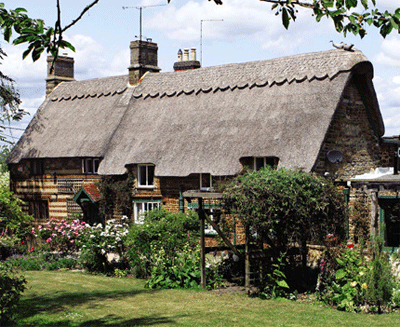17th century thatched cottage in Northamptonshire
A pretty four-bedroom thatched cottage in Moreton Pinkney, in Northamptonshire, has a barn with potential for conversion

Pear Tree Cottage is a 17th century Grade II listed property close to the centre of Moreton Pinkney in Northamptonshire. The house is built of local ironstone under a reed thatched roof, and sits in nearly an acre.
Period features include ironstone mullion windows, an inglenook fireplace and ceiling beams; recent improvements include a new kitchen in 2008 with natural stone floors and a Belfast sink. The sitting room is cosy and has exposed wood floors and a fitted wood burner; the fireplace is in the snug and there is also a guest bedroom on the ground floor.
The first floor has three double bedrooms and a family bathroom.

* Give Country Life for Christmas and save up to 40%
Outside within the grounds is a detached two-storey stone barn which offers the potential for a variety of uses, or has planning permission for a two-bedroom dwelling. The gardens are attractive and offer extensive lawned areas and well stocked borders. There is also a chicken run, a vegetable garden and a pond.
Moreton Pinkney is a sought-after Norhamptonshire village with a parish church and a village hall. Nearby Sulgrave has a village shop and Culworth, Weston and Eydon have good pubs. Further amenities are available at Banbury and Towcester.
The guide price is £695,000. For further information please contact Hamptons International on 01295 275 885 or visit www.hamptons.co.uk.
Exquisite houses, the beauty of Nature, and how to get the most from your life, straight to your inbox.
* Country Houses for sale in Northamptonshire
* Follow us on Twitter

